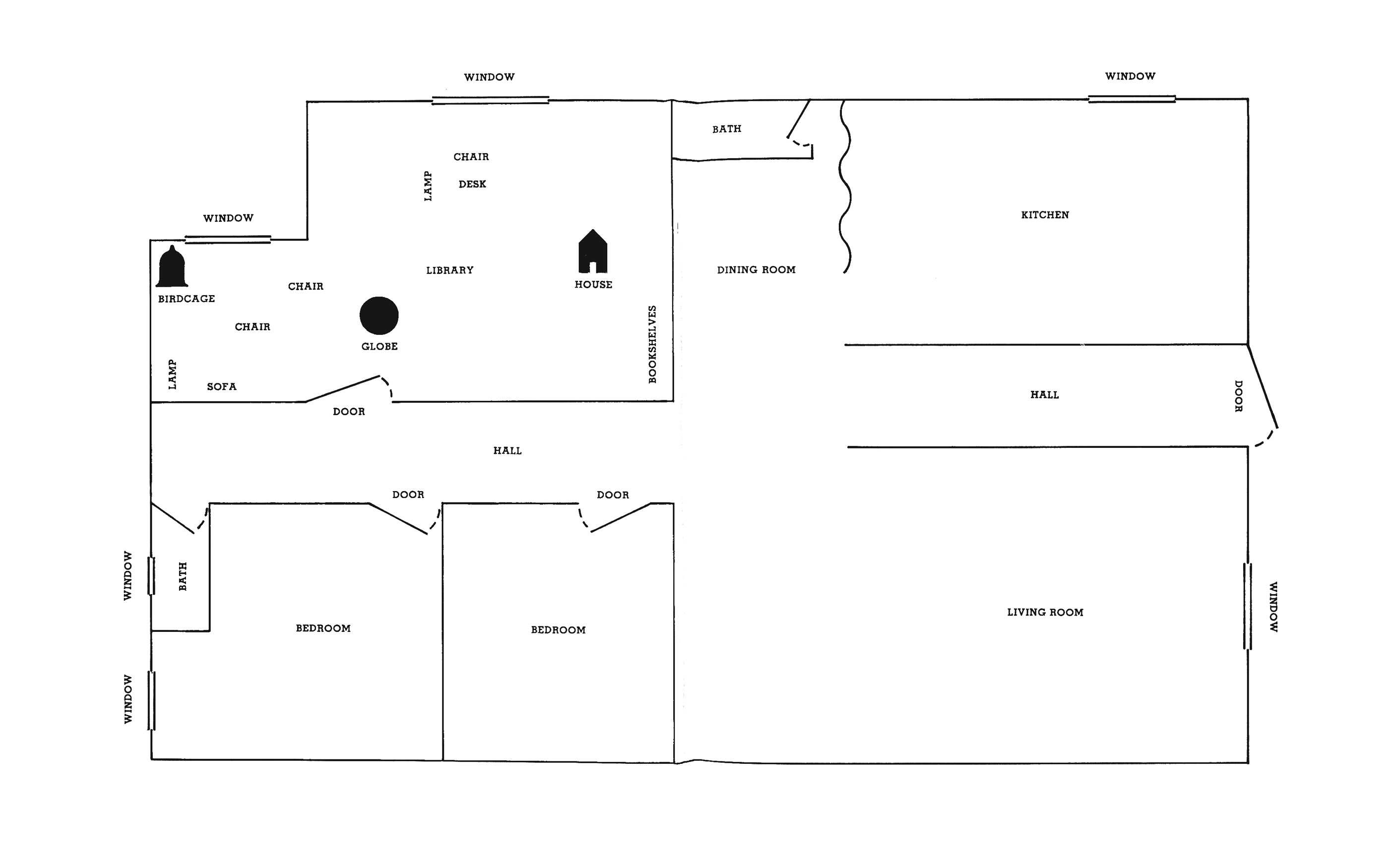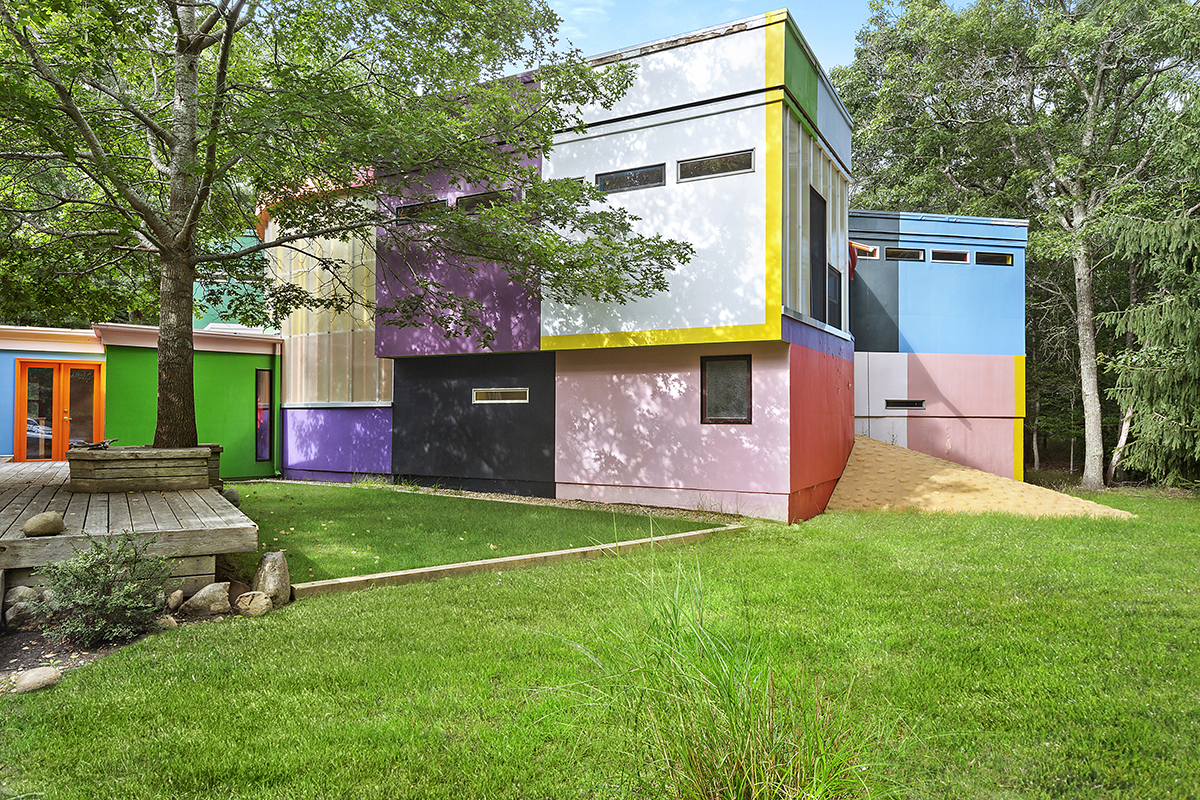Madeline Gins was a New York-based writer, poet, and designer who died in 2014. She is largely remembered, with her husband Shusaku Arakawa and the Reversible Destiny Foundation they cofounded, for designing environments intended to safeguard their inhabitants from ever having to meet their mortal ends. The ambiguity at the heart of the project—reversible how?—has been left unresolved.
Over the course of their decades-long partnership, however, Gins and Arakawa were completely earnest about their inquests into perceivable reality. It’s a sensibility that colors their jointly produced artworks, such as the 1979 series Mechanism of Meaning, but also Gins’s sadly overlooked writings. Now, a new anthology collects her essays, poems, and stories—many previously unpublished—into one volume.
The Saddest Thing Is That I Have Had to Use Words: A Madeline Gins Reader (Siglio, 2020) is organized into five sections with an introductory essay by editor Lucy Ives. For the unpublished works, Ives, a poet and essayist, drew on Gins’s archive at the Reversible Destiny Foundation in New York. She augmented these writings with work that had been previously published with small print runs, like WORD RAIN (or A Discursive Introduction to the Intimate Philosophical Investigations of G,R,E,T,A, G,A,R,B,O, It Says), an experimental multi-chapter fiction that forms the centerpiece of the book.

Gins’s writing is not straightforward. Meaning leaps out of word adjacencies as fully formed images; often the reader inserts word, impressions, and associations in the attempt to make sense of fragments of phrases. The effect can lead to blurred vision, even as the compositions themselves remain precise. This is perhaps the point—that understanding arises from the act of perception. Gins was a master of wordplay; humorous images are built up into piles, with groups of phrases building into networks of meaning flowing in gradients down the page. From WORD RAIN:
Step on it—word
The walking eye on a string
crosses the pier in sight
with calluses of color—gray, taupe, yellow
forming from the constant
friction with the mist.
It is in between.
Memory is made up of gas shavings.
These networks are at once filled with the tangible—descriptions of sensations, colors, scents, movements—and with the conceptual: jumbles of unrelated words, disconnected fragments of sentences, punctuation that floods the page, and casually inserted philosophical references.
The conceptual vibration of the poetic and fiction works is elucidated by two essay sections Ives pulled from the archive, the first dating from the early 1960s and the second from much later in Gins’s career. Already in “The Fictions of my Non-Fiction” (1963 or ’64) Gins lays out aspects of her philosophy that would be present in her later work, both written and architectural. Gins delved deeply into the embodiment of perception, the means by which the body senses, and the media—light, touch, the air itself—that transmit information to the perceiver. “I became such an enraptured image viewer, that the ‘viewing force’ (I think?) expanding, started to seem of interest to me as yet another ‘entity,” she recounts in that formative essay. For Gins, one’s surroundings exert force on one’s being and, through focusing one’s attention on certain places, one can in turn exert force on those same surroundings. That is to say, perception is transitive, a medium for action.
In one of her later essays, “Helen Keller or Arakawa” (1994), Gins takes this theme further, breaking personhood into component processes. Consciousness becomes “the thinking field” that is anchored to, and co-constitutive of, space. Is the self a dot, a ball in the chest, or does it extend down the arm, out of the eyes onto the things which are being seen? Can vision be kinetic? Or, as Gins asks in the essay, “Might there be an underlying basis for seeing, and, if so, would this be detachable from the actual seeing of things?” A person is not complete without an environment to form and be formed by.

The architectural work of Reversible Destiny picks up this thread; Gins and Arakawa designed buildings that were intended to help their occupants “learn not to die.” With wildly uneven and bumpy floors, wild colors, disjointed—dangerous?—fixtures, and unpredictable changes in scale, these spaces encourage the occupant to continuously pay attention to their surroundings, to extend their personhood into their environment, and to be reaffirmed, personified, by the forces exerted by the off-kilter surfaces in turn. If one’s locus of awareness is constantly in motion like a pinball, it can never fall into stasis, non-being, death.
Neither Ives’s introduction nor the selected writings make the link between Gins’s philosophical-poetic practice and her architecture, aside from a few passing mentions. Perhaps Ives felt that these works were already known well-enough, or perhaps she wanted to place Gins in another lineage. Indeed, Ives’s introductory essay adopts an art historical format, naming the various scenes Gins was a part of, the other personalities who moved in the same circles, claiming a spot for her in the well-trodden hagiography of the 20th-century Downtown art milieu and rescuing her from culture’s bottom drawer (architecture). Yes, Gins was there with all the rest of the artists who have been absorbed so readily into the art market and institutionalized, but her work will live on longer.











